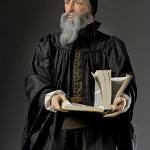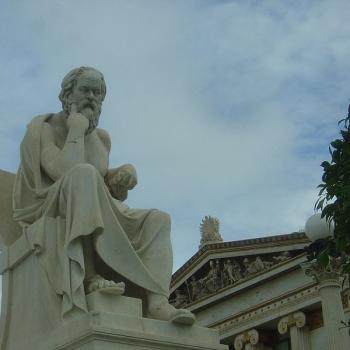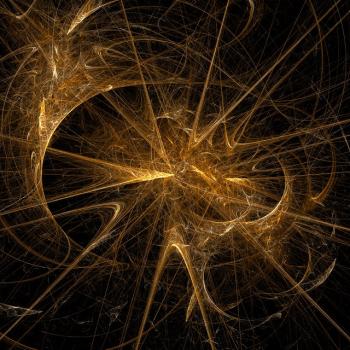
This is my third post in reply to atheist physicist Aaron Adair, who wrote a book skeptical of the star of Bethlehem. He first wrote, asking me some questions, after having seen two posts of mine on the topic. I thought we could actually have a good dialogue (that rarest of rarities these days), and enjoyed it at first. But, sadly, the ostensible “dialogue” quickly went sour, and he has since — unwilling and apparently unable to deal point-by-point with my overall case for the star as a natural phenomenon — devoted all of his polemical energies to “proving” that I am the worst liar since Pinocchio and Satan himself: the “father of lies.” Here are my two previous posts:
Star of Bethlehem: Reply to Obnoxious Atheist Aaron Adair (Plus Further Related Exchanges with Aaron and a Few Others in an Atheist Combox) [1-14-21]
Star of Bethlehem: 2nd Reply to Arrogant Aaron Adair [1-18-21]
Since then, under his latest hit piece he has repeated the charge several more times (his words in blue henceforth):
[W]hat Dave is saying is such-and-such persons thinks the Star was natural; but the reality is that that person explicitly said it was supernatural. What Dave is doing is misrepresenting what the commentators are actually saying, sometimes even making things up.
If Dave were just sticking with arguing that the Star may have been natural but misunderstood, that would be a possible position to honestly defend. Instead, he says that commentators such as Benson agree with him that it is (or could be) natural. But Benson in particular is clear what he thinks, and it’s not what Dave said. That is why I’m saying Dave is being disingenuous. Moreover, because I already showed him that these folks were not believers in a natural Star, but he nonetheless said they were, eliding the comments they made that would have shown it, makes Dave a liar.. . .
[W]hen I know someone knows the truth, but presents the exact opposite, then I’m obligated to call them a liar.
You get the idea . . .
In my previous reply on 1-18-21 above, I dealt with the premise that Arrogant Aaron is utilizing: that I am deliberately quoting out of context (rather than what I was actually doing: citing people who partially agree with me, while at the same time acknowledging that they also disagree with me on other particulars).
In this reply I will deal more specifically with various false accusations from Aaron, and show how he isn’t even thinking logically, besides calling me a liar over and over when the charge is unwarranted. He’s obviously using the old tactic of the Big Lie (simply repeating a slander over and over) to “establish” that I am a liar by nature, for the purpose of destroying my credibility.
It’s one of the most pathetic displays I’ve ever seen: especially coming from a scholar, who is supposed to know far better than this. A physicist, for heaven’s sake, who shows himself unacquainted with the most elementary rules of logic? I have opined that hostility has the ability to corrupt otherwise brilliant minds and to make the person say silly and stupid things. Well, the charge is only as good as the evidence presented for it.
Let’s now get into specifics.
What Mr. Armstrong has done in his efforts is to marshall as many scholars as he can to support his position, in particular proving that there is reasonable debate among scholars about how to view the Star as either natural or supernatural.
This is the beginning of his (very cleverly) misrepresenting what I was attempting to do in this particular article of mine. All he concentrates on in his alleged “rebuttal” is this aspect of “supernatural vs. natural” as regards the star of Bethlehem. But that wasn’t my only topic. In fact, it was only applicable to three of the six questions / categorical sub-headings for which I cited Christian commentaries in (usually partial) agreement with my views. Here are the three that are categorized by “natural vs. supernatural”:
I. Star of Bethlehem Was a Natural Celestial Phenomenon
II. Unsure Whether it Was Supernatural or Natural [i.e., the possibility of it being natural was not ruled out]
V. Star of Bethlehem “Stopping” as the “Retrograde Motion” or “Stationary Point” of Jupiter
And here are the three categories that were logically and topically distinct from the “supernatural vs, natural nature of the star” issue:
III. Star Of Bethlehem Did Not Specifically Shine Down on the House Where Jesus Was
IV. Unsure Whether the Star of Bethlehem Specifically Shone Down on the House Where Jesus Was [i.e., the possibility that it didn’t specifically shine down on one house was not ruled out]
VI. Phenomenological, Non-Literal Language of Appearances Employed in Matthew 2:9
Arrogant Aaron appears to not grasp this logical distinction, and so proceeds as if all I am dealing with is the question that he is obsessed about. Thus, this was his first presuppositional error in his analysis, and it leads him far astray of the truth, leading him to conclude (based on his false premise) that I am an inveterate “liar.”
Then he launches into another non sequitur charge that I have already disposed of:
First off, it has no commentators prior to the 19th century–no Augustine, no Aquinas, no Luther, none of the Church Fathers or other famous interpreters. No Kepler either. Heck, no non-English sources! So he is missing out on a huge swath of commentators. Also note that most of his sources come from the 19th century. It’s almost as if there is little in the way of modern support, let alone traditional confirmation. I could have supplied many dozens of authorities in favor of my position, just like I did with St. Augustine (Against Faustus 2.5), but I’d rather avoid the tedium and look instead at Dave’s citations.
I wasn’t attempting to cite commentators from the entire 2000-year history of Christianity. I have already agreed with Aaron that the overwhelming majority of commentators before the 19th century took the view that the star was supernatural. But this doesn’t bother me in the slightest, and in another paper, published on the same day as the one he is futilely trying to shred (that he has chosen to utterly ignore), I explained why:
It’s been noted that the natural explanation was of recent vintage. I have no problem granting that, but it’s of little concern to me. As science has progressed, several aspects of Bible interpretation have progressed along with it, in agreement. Thus, very few educated Christians believe in a 10,000-year-old earth (as even many scientists believed before Darwin) anymore. Why? Because science has shown that it’s far older. Few believe in a universal flood.
The text of the Bible — rightly understood — doesn’t require that, either, in the first place (it’s consistent with a local flood). But science has (in my mind) shown that a worldwide flood was impossible. Many Christians now are theistic evolutionists (as I am). This wouldn’t have been the case before Darwin, though both St. Augustine and St. Thomas Aquinas expressed notions that were broadly similar to evolution.
Few — because of science — think that the sun literally stood still for Joshua. That includes myself. I believe it was some sort of divinely guided optical illusion, just as I believe that was the case in the miracle of the sun in Fatima, Portugal in 1917. Almost all Christians aren’t geocentrists, anymore, either. Nor are we heliocentrists, because the sun is no more the center of the universe than is the earth. Galileo and Kepler got that wrong. . . .
In other words, as science progresses, and Christians by and large accept its advances like everyone else, our exegesis changes as well. It’s not that the Bible was wrong in any of these cases, but that our understanding of it was aided by the further knowledge and input of science. Therefore, we would fully expect to see more naturalistic explanations of texts that aren’t immediately or exclusively explainable as miraculous.
Arrogant Aaron continues his extraordinarily quixotic crusade — caricaturing and distorting all the way — to make me out a supposed liar:
Another thing to note is that Dave has fluffed up his list. He cites the same authorities multiple times. 3 times he cites Wilkins (2009), 3 times Schaff (1890), three times Pett (2013). Others he cites twice. So his unique list of authorities is even smaller than at first glance. But that is not what’s even the biggest problem.
This is laughably ridiculous. The question is: why did I cite these folks three or two times? Quite obviously, because it had to do with agreement on different particulars. Remember, I had six categories I was grouping the commentators under. If they had relevance to more than one, then I included them in more than one. Thus, Wilkins noted that “many” biblical commentators have held the view that the star was “a comet, a supernova, or a conjunction of planets.” Thus, I cited him under the sub-categories of supernova and comet in section I (though not under “conjunction”). Duh!!!
I also cited him under “II. Unsure Whether it Was Supernatural or Natural” since, when a biblical commentator highlights what other commentators think, it often (but not necessarily) means that he is not sure, himself how to interpret a text. That’s fine. It happens all the time and is perfectly natural. So I put him in the category of “unsure.” This is being totally honest with my readers: the very opposite of this image that Arrogant Aaron pushes in vain, with all his might: that I am an utterly incompetent and deliberately dishonest researcher; a liar through and through.
Likewise, Schaff is cited under three distinct categories, talking about three different things (three completely different quotations from him). This explains why I cite folks multiple times. It ain’t rocket science. I am supposedly under some imaginary restriction that I can’t cite someone three times? But if I do it’s somehow “dishonest” and one more example that I can’t research and am a “liar”? Who the hell decided that? Wow! Arrogant Aaron is really straining at gnats with this one. But it gets far worse. Keep reading . . .
Let’s look at one of his modern sources, from R.T. France (1985), a conservative scholar who generally supports the historicity of the Jesus stories. France is also Mr. Armstrong’s most reputable modern scholar, so we should take seriously when France says that the text doesn’t specify if a precise house or the general area of Bethlehem is meant by the text of Matt 2:9.
Good! Aaron momentarily ascends to a brief foray into rational thought and fairness. He speaks truth here: a breath of fresh air amidst the stench. And this is why I cited France. He agreed with me on this particular issue. Aaron also proves here (almost despite himself) that my paper was about more than just the supernatural vs. natural star issue. This is an exegetical question. What does the text say? I had stated at the top:
Moreover, he [Jonathan MS Pearce] claims that this “star” specifically shone down on (to identify) the “house” where Jesus was, even though the biblical text (Matthew 2:9) never states this and refers (in 19 Bible versions I have found) only to a “place” that can be a large regional area. . . .
I decided to undertake a survey of many biblical commentaries to see if — here and there — perhaps one or two (needle in a haystack) might be found that agree with what I am contending about the star of Bethlehem being a natural phenomenon, and not shining specifically on one house in Bethlehem. [bolding added presently]
So I cited R. T. France: a biblical commentator so reputable that even Aaron recognizes his scholarly stature. And this is all I cited him form (with regard to the “shining [on what?]” question). But — not getting this — Arrogant Aaron proceeds to sophistically spew out a complete non sequitur:
However, France has a lot more to say about the Star: [following by a citation of two paragraphs] . . .
That is a lot to miss, all completely contradicting Dave’s argument that France supports the idea that the Star was astronomical.
Again, this is equal parts laughable and ridiculous. Quite obviously to any reader with even a shred of rationality and fairness, I cited France with regard to one thing and one thing only: whether the star shone down on one house, as is the myth commonly held by many Christians and lots of atheists too, in their titanic struggle to understand what the Bible stated in the first place.
I ask Arrogant Aaron: where did I ever claim that France “supports the idea that the Star was astronomical”? Of course, I never did. Aaron merely assumes this. And assuming it with no evidence at all, he constructs this fairy tale that I falsely claimed he did so, and therefore, “lied” yet again (for about my 1,928,367th time).
Once again, dear reader, please note: I had two general aims in this article: to show that commentators exist who thought the star was a natural phenomenon, and also others who agreed with me that it didn’t shine down on one house.
And I repeat again, what I made very clear in this paper:
For the sake of brevity, I only cite them where they agree with me or when they claim not to know what it was (neutral or agnostic position: II and IV below). I’m not denying at all that these commentators may also disagree on the other major point or additional ones. Readers who want to see their entire comment on Matthew 2:9 can follow the links I provide.
Arrogant Adair actually showed that he accurately comprehended the meaning of this, in the combox:
Let’s first see where we agree. It is true, and appropriate, to quote someone on points where they agree with you on a subject. It would be totally fair for me to quote from the McGrews in their criticism of fine tuning arguments, while we obviously disagree on theism. Similarly, if you were to quote Bart Ehrman against Jesus mythicists, while you believe much more in the historicity of the Gospels than Ehrman does, that would be completely legit.
But — lest he speak truth for too long a time — he has to immediately turn it into a slanderous blast against me:
However, you did not represent what these various authors said, not about something different, but about the exact same thing: the nature of the Star of Bethlehem.
Uh-huh. Now, how does this claim apply to how I cited R. T. France? I cited him with regard to one particular point. He actually agreed with me. Even Aaron conceded that he agreed with me, and (as an extra bonus) that he should be taken seriously, too. What I cited from France had nothing directly to do with what his overall view of its nature was, since my citation only had to do with one particular way it behaved (which is arguably harmonious with either view: natural or supernatural).
Therefore, I did nothing improper or dishonest whatever here. Aaron lies about that. How ironic, huh? Arrogant Aaron then goes back to commentator Michael J. Wilkins:
The same thing happens with Dave mutliply-cites Michael Wilkins, since Wilkins first brings up the numerous theories put forward about the Star. This is what a good scholar should do: bring up all of the possibilities.
Exactly! And this is why, of course, I cited him. He bore witness that “many” scholars hold that the star was a natural phenomenon. That’s precisely how he supported my case, in arguing for the notion that, well, many scholars hold that the star was a natural phenomenon. Any sixth-grader (maybe even a sharp student in fifth grade) could easily follow my logic. But Aaron can’t.
But this is not what Mr. Armstrong does, as he completely avoids mentioning Wilkins said this: [citation having to do with a supernatural interpretation of the star]
Once again, Dave’s own sources say he is wrong–the Star must have been supernatural so it could guide the Wise Men to a particular locale.
This is wearisome and tedious in the extreme. It’s absolutely irrelevant (to my overall argument) whether Wilkins thinks the star was supernatural or not. I have no problem with anyone believing that. I have repeatedly stated that many equally good and reputable commentators think so, and indeed did for most of Christian history (partially for reasons I have explained: the lack of scientific knowledge).
I wasn’t citing Wilkins for his own opinion of the star, but only for what he bore witness to regarding other commentators. Hence his one citation that I used three times in arguing for three different things, started out with, “Many suggest that . . .” I never dealt with his own particular opinion at all, since it was irrelevant to the immediate point. In fact, his witness strengthened my argument for saying many hold to a natural view, because a guy who holds to the supernaturalist view was conceding that “many” who hold a different opinion also exist.
It does because this is, in effect (as in both law and general dialogical rhetoric), a “hostile witness.” In other words, if you find a guy A who holds to position x, whereas you are arguing for contrary position y: that it is held by many scholars, and A freely acknowledges that “many” scholars hold position y, then this is very strong evidence for the latter assertion, since A has no inherent bias in favor of y; therefore can be trusted as a non-biased witness in defense of the existence of many scholarly adherents of y.
I concede that this is a bit more advanced and subtle rhetoric and logic. Seeing that Aaron repeatedly shows that he can’t grasp even simple logical aspects, I don’t expect him to comprehend this at all. He will only use it as a ludicrous pretext to “prove” that I am (yes, you guessed it) a “liar.” It’s truly sad and pathetic. Blissfully ignorant of such logical considerations, Arrogant Aaron continues his relentless slanderous assault:
The pattern continues when Dave looks to the People’s New Testament (1891). He only quotes a fraction of what it says about Matt 2:9, leaving out this: [comments asserting his belief in a supernatural star]
It’s the same logical and rhetorical scenario as in the cases of France and Wilkins, explained above. I never denied that any of these people held to a supernaturalist view. It’s irrelevant to my argumentation. As with France, this source was cited with regard to one thing, and one thing alone: “Whether the Star of Bethlehem Specifically Shone Down on the House Where Jesus Was.” The source showed that it was unsure about this aspect, that Jonathan MS Pearce seems to be so sure about: “Either [shining] over Bethlehem, or over the house where the young child was sheltered.”
Again, this is a logically distinct question from the supernaturalist one. A supernatural light can shine on an object (like the angels shone on the shepherds on the first Christmas night), and (as I have argued), a natural light (here I think it was Jupiter) could be said to shine on a larger area (Bethlehem). In any event, there is no lying; there is partial agreement, and that’s all I have ever claimed for all these citations.
Arrogant Aaron then repeats the same fallacy a fourth time, by noting that the Bible Study New Testament takes a supernatural view. I only cited it with regard to what the star shone down on: a totally separate question. He contends that it was (by strong implication) a “lie” for me not to mention the former thing. I say it’s a non sequitur (i.e., totally irrelevant to the question at hand). Apparently, Aaron thinks that if one doesn’t bother to mention any and every irrelevant aspect, in studying one particular issue, then it’s (can you guess?) a “lie”.
He would only have a case along these lines if I implied that these people I cited agree with me all down the line, or were all in favor of a natural star interpretation. But of course I never did that. I specifically noted that they disagreed with me, too, but that I was citing them only in cases of agreement:
For the sake of brevity, I only cite them where they agree with me or when they claim not to know what it was (neutral or agnostic position: II and IV below). I’m not denying at all that these commentators may also disagree on the other major point or additional ones. Readers who want to see their entire comment on Matthew 2:9 can follow the links I provide.
Can you see a pattern yet? Dave continuously avoids showing what else these commentaries say. That is a classic quote mine, and it is a disingenuous method of citation. It actively hides what the quoter doesn’t want you to know. However, so far, these are lies of omission.
The poor man just doesn’t get it. I recommend that he take an introductory course in logic (I took one in college; still have the textbook in my library). It would seem likely that he has done so, with his Ph.D. in physics. If so, he has forgotten what he learned there, or else (as I have argued), his logic goes out the window when he is ferociously hostile to a position. All of a sudden, he loses his capacity to argue in a sensible and rational fashion. That’s my own theory as to his shoddy thinking throughout our exchanges. He is too hostile (to Christianity and to me personally) to be rational. And so he has laid himself bare, to be eviscerated by a much more objective and logical counter-argument.
But even in the midst of Arrogant Aaron’s relentless illogic he manages to make a good point once in a while. And I am always willing to acknowledge truths and facts, no matter how illogical (or insulting) is the person who made it. Truth is truth, after all, and even an unplugged clock is right twice a day (for a minute each time). I already informed him that I partially grant his point about various definitions of “meteor” in the 19th century. I added the following to my paper on commentaries and the star:
[Note: Alastair McBeath, in his article, “Meteor Beliefs Project: ‘meteor’ and related terms in English usage” (WGN, Journal of the International Meteor Organization, vol. 32, no.1, p.35-38, 2004) states that formerly there were several different understandings of the word meteor, and four major classes: airy, watery, luminous, and fiery. He stated that the “luminous” variety were not “the ‘shooting-star’ type, but consist of other phenomena such as the aurora, the rainbow or any of the halo effects seen mainly with the Sun or Moon.” But then the plot thickens, as he explains further:
Looking at mid-19th century information suggests the preferred term for shooting-stars then, in the scientific literature at least, was ‘luminous meteors’, not ‘fiery’ ones, however. . . .
‘Fiery meteors’ was still in use, then, as well as the more general ‘meteor’ for almost anything in the sky . . . However, this seems to have been more among the poetic or philosophical communities.
So it’s difficult to determine with certainty in the four 19th century citations above, which exact sense is in mind. It may be that a sense is being used that is not “natural” per se, and thus would be classified as a supernaturalist explanation.]
In one case (hallelujah!) he actually has a point. I cited The Catholic Commentary of 1953 (edited by Dom Bernard Orchard) in the meteor section. Arrogant Aaron pontificates:
This becomes a problem when Dave brings up several sources claiming the Star was a meteor. First off, one of those sources (from Dom Bernard Orchard) doesn’t say anything about a meteor at all, so Dave is just making things up. Instead, the Catholic commentary he has says
The star reappears (cf. ‘and behold’)–it had evidently not led the Magi to Jerusalem. It stands now in the southern sky in the direction of Bethlehem. Mt’s text, literally interpreted, gives the impression of a light visibly advancing southwards (unless we translate, with Patrizi, ‘had gone before them’). This impression is heightened by the apparent implication that it was the star which showed the actual dwelling (though read ‘over the place’ KNT, rather than ‘over the spot’ WV). If this is correct, the ‘star’ is a luminous body in the lower atmosphere.
A CATHOLIC COMMENTARY ON HOLY SCRIPTURE (1953), P. 856
Dave only quoted the last line, which says nothing about a meteor, but then claim that the author here is saying it was a natural phenomenon. Mr. Armstrong is imposing a lot onto this commentary and ignoring virtually everything else. Obviously because it doesn’t fit what he wants. So this is both a lie of omission and a lie of saying something is there which is not.
Okay. For Aaron this is yet another “lie” on my part. It was not. It was a matter of interpretation. I took him to mean “meteor” in his description, “luminous body in the lower atmosphere.” To me, this sounded like a perfectly natural phenomenon in the author’s mind, and what it most resembled was a meteor, and so I classified it as such. Part of my reasoning was a consideration that the term “luminous meteor” was one of the categories of the 19th century, which sometimes meant by what we today understand as a meteor, and sometimes didn’t (per my citation on etymology). And so I interpreted him to be saying the same thing because of that. But it’s too much of a jump to make (I see now). So score one for Aaron; I shall remove it from my paper.
But I protest against the charge that I was deliberately lying. I was not. I simply have changed my mind upon further reflection (which all thinkers should and actually do): thanks in part to Aaron. Far more interesting, however, is the commentary on Matthew 2:2 in this same work (which I formerly didn’t consult, in consulting many dozens of commentaries for my summary overview):
2. The appearance of a new and brilliant star in the eastern sky (ἀνατολή in the sing, as in 9, not plur. as 1) sends the Magi in a westerly direction to the Jewish capital. Evidently they were aware of the high pitch of Messianic expectation among their Jewish neighbours (witness the many pseudo-Messiahs after Herod’s death). Possibly also (though Mt is silent) the Magi received a special revelation. The ‘star’ (ἀστήρ) cannot mean a group or conjunction of planets (ἄστρον); this excludes Kepler’s conjunction in 7 B.C. of Saturn, Jupiter, Mars. Halley’s comet, 12 B.C., is apparently excluded by its date. The comet-hypothesis in general (Origen, Contra Celsum, 1, 58, cf. Patrizi, De Evangeliis, 3, 309–54) is difficult to reconcile with the description of the star’s behaviour in 9 unless (with Lagrange) we grant that Mt intends no more than a popularized account of an extraordinary but natural phenomenon. For the majority of Catholic exegetes the star is a special creation as, indeed, the text most naturally suggests.
There’s a lot going on here, some of which supports my own theory, but most of which does not:
1) He doesn’t seem to deny that the initial star in the east is a natural star; he only denies that it is a conjunction. Or so it seems to me, anyway.
2) He rules out the comet explanation by the earliness of the appearance of Halley’s Comet (12 BC) and the “movement” of the star of Bethlehem, described in Matthew 2:9.
3) But (and here’s where he grants that my theory is at least a possibility, not to be entirely dismissed:
unless (with Lagrange) we grant that Mt intends no more than a popularized account of an extraordinary but natural phenomenon.
4) He himself, however, opts for the supernatural explanation, as most plausible, and notes that “the majority of Catholic exegetes” interpret it in that way (though he seems to be reluctant to express an absolute opinion on it: appealing to majority opinion doesn’t clinch it, and could be a variation of the ad populum fallacy). And this is why he shouldn’t be included in the “natural / meteor” category.
I myself have argued what he describes in the third point above: that the language of Matthew 2:9 is phenomenological; the language of appearance. And I have provided extensive arguments throughout my ten papers on the star, in support of my opinion (and section VI of my paper under consideration deals with it). Take ’em or leave ’em. This commentary allows that they are not ridiculous; immediately to be dismissed, and that some respectable Catholic exegetes indeed express the view. Nothing in Catholic dogma requires any Catholic exegete to take any particular view of the exact nature of this “star.” Thus, we are free to have differing opinions (as is true of almost all the passages in Scripture).
Arrogant Aaron continues his assault by noting that I cited Adam Clarke with regard to the meteor theory, while not mentioning that he thought it stood over where the child was. He takes this to mean that it must, therefore, be supernatural. This is possible, but not absolutely necessary. A meteor — if Clarke meant by it what we mean today — may have simply (following natural laws) burned out right over where Jesus was.
In God’s providence, natural phenomena can sometimes be incorporated into His will as “signs” of spiritual realities. Two examples of this that I have mentioned several times in these papers are the eclipse and earthquake that the Bible mentions as occurring during Jesus’ crucifixion. These are natural events, but it so happened that they occurred right during the crucifixion of Jesus (as indeed, eclipses are mentioned several times in the Bible as signs of the end times, etc.). And so it may have been the case with a meteor. Adam Clarke appears to be saying it was an actual meteor. In his commentary for the related passage Matthew 2:2 he wrote:
. . . an unusual luminous appearance or meteor in the heavens . . . As to what is here called a star, some make it a meteor, others a luminous appearance like an Aurora Borealis; others a comet! There is no doubt, the appearance was very striking: but it seems to have been a simple meteor provided for the occasion.
So now the Northern Lights and comets are also “supernatural events”, according to Aaron? Every indication is that Clarke held it to be a meteor: a natural phenomenon. By saying it was “provided” it is a reference to God’s providence. The meteor did what it did, naturally, and happened to burn out right above Jesus. This doesn’t makes it thereby “supernatural.” It’s simply a natural event that coincided with a spiritual one, and so acted as a sign.
As another example of the closeness of the natural and supernatural in the Bible, consider this passage:
Matthew 17:24-27 (RSV) When they came to Caper’na-um, the collectors of the half-shekel tax went up to Peter and said, “Does not your teacher pay the tax?” [25] He said, “Yes.” And when he came home, Jesus spoke to him first, saying, “What do you think, Simon? From whom do kings of the earth take toll or tribute? From their sons or from others?” [26] And when he said, “From others,” Jesus said to him, “Then the sons are free. [27] However, not to give offense to them, go to the sea and cast a hook, and take the first fish that comes up, and when you open its mouth you will find a shekel; take that and give it to them for me and for yourself.”
A fish with a shekel (coin) in its mouth is not (at least not necessarily) a supernatural occurrence. The fish simply ran across a coin and it went into its mouth. But Jesus knowing that it was there, and at the exact time to make one of His points about taxes, is supernatural. Likewise, a meteor is a natural phenomenon, and Clarke seems to be using it in this way. The fact that it (in his theory) burned out right over Jesus is still not proof that it was supernatural; only that it functioned as a sign to the Magi, by the coincidence of where it burned out. It could still have done that, strictly following the laws of nature.
Arrogant Aaron argues in the same fashion regarding my citation from Albert Barnes. Because he thinks the Magi were “directed” by the star, he thinks this proves it was supernatural. But that doesn’t necessarily follow, by the reasoning I have been providing. Barnes clearly takes a naturalistic view. In his commentary on Matthew 2:2 he proves what he had in mind by using the word “meteor” (i.e., very likely what we mean by it today):
What this star was is not known. There have been many conjectures respecting it, but nothing is revealed concerning it. We are not to suppose that it was what we commonly mean by a star. The stars are vast bodies fixed in the heavens, and it is absurd to suppose that one of them was sent to guide the wise men. It is most probable that it was a luminous appearance, or meteor, such as we now see sometimes shoot from the sky, which the wise men saw, and which directed them to Jerusalem. [bolding and italics mine]
There is no “lying” here whatsoever; no attempt to deliberately deceive or mislead readers; no shoddy scholarship. In fact, this is now two cases (Clarke and Barnes) where Arrogant Aaron’s false accusations have motivated me to take a closer look at their comments, and in both instances, my original argument was strengthened.
Turning then to a commentary from the 1870s, again Dave doesn’t relate this to his readers:
Much has been written on the subject of this star; but from all that is here said it is perhaps safest to regard it as simply a luminous meteor, which appeared under special laws and for a special purpose.
COMMENTARY CRITICAL AND EXPLANATORY ON THE WHOLE BIBLE (1871), MATT 2:2
Notice the mention of special laws, meaning not the laws of Nature. In other words, the Star was supernatural.
Well, okay. I think an argument might still possibly be made along the lines of what I contended about Clarke and Barnes, but “special laws” does indeed suggest the supernatural, and so I will concede this and remove this entry also. So score two for Aaron.
I didn’t see this, because it was in his commentary of Matthew 2:2, not 2:9. I was specifically looking for commentaries on Matthew 2:9. I suppose Arrogant Aaron could assert that “you shoulda looked at Matthew 2:2 in each case, too!” I don’t think that’s in the Ten Commandments, last time I checked, or in some mythical handbook of how one must in every case do biblical exegesis and commentary. Consulting larger context is generally a good idea, but not absolutely required in every case. As it is, when we looked at Matthew 2:2 in both Clarke and Barnes’ cases, it supported my view and not Aaron’s. In the cases of the Catholic Commentary and this one, it supported his. In any case, I am not proved to be a liar by these examples. Nice try.
This present article provides far more proof of the lousy, shoddy thinking (even perhaps lying in some cases?) of Aaron Adair. He makes a big deal of my being informed of something being wrong (in his opinion) and my continuing to say it anyway, thus “proving” that I am an obstinate liar. Well, that works both ways, doesn’t it? He hasn’t proven that I am a “liar” — as I have shown above, in numerous examples –, but I have proved, I think, that he has been dead-wrong on several occasions. And so now he must face these facts and change his opinion when logic and facts require it. I’m on record now as changing my opinion in three different ways, under Aaron’s assaults. This shows that I am:
1) a serious, open-minded thinker, always open to correction,
and
2) not too prideful to accept correction,
and
3) moreover, willing to accept correction even coming from a perpetual slanderer, because truth is truth, and even the habitual slanderer sometimes finds it, even despite himself.
Arrogant Aaron then brings up Joseph Benson: his favorite example to allegedly show what a lying scumbag I am, arguing that his statement that the star “miraculously conducted to the very town pointed out in the Scriptures as the place of the birth of the Messiah.” I think Benson is being inconsistent here. He says it is a meteor, yet that it was “miraculous.” I think it’s a case of what I have explained: a coincidence of natural events that functioned as a sign of a supernatural event like the virgin birth of Christ: the incarnate God.
Nevertheless, Benson thinks it was “miraculous” and so I shall remove his entry also. Score three for Aaron. He was right (or at the least, arguably or plausibly right) about some aspects of these commentators, while remaining dead wrong in claiming that these instances prove my deliberate lying intent. It also makes my overall theory and argument stronger, because I have removed the weaker planks from it, while strengthening the ones that held up under Aaron’s scrutiny. So I thank him for that! And I have demolished several of his attempts to “correct” me, which miserably failed.
Aaron wrote in his combox:
I hope that I’ve followed that same rule of pointing out where a source agrees and disagrees with me on a subject; for example, I highlighted how R.T. France agrees with Dave that the text doesn’t specify a house (something that we could reasonably argue about), as well as where France agrees with me. This is what scholars should do in general, lest we just turn people into prooftexts and avoid all those annoying ‘facts’ we don’t like.
And this is what I have done in this article: conceded three more points to Aaron, upon further reflection (modifying the paper in question, and retracting three citations). At the same time I have shown in many more cases where his own arguments fall flat: which I think is most likely caused by shoddy, fallacious thinking, not some horrible defect in his character that makes him habitually lie on purpose. And I have shown that I am not a deliberate, habitual liar, who gives not one damn about facts: which is overwhelmingly his most often repeated charge.
You, reader, be the judge. I’m more than happy to leave my fate in your hands.
***
Arrogant Aaron’s “response”:
I note that in a recent post, Dave agrees that Benson says the Star is miraculous and has removed it from his list. He has done this with a few other sources as well. I’ll let others interpret how best to take that. It would suggest honesty, only insofar as he has to have is faced pushed next to the text to admit what it says. Conversely, it shows he cannot do reliable research.
***
Photo credit: [Pixy.org / CC BY-NC-ND 4.0 license]
***













